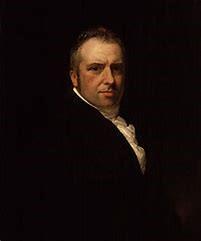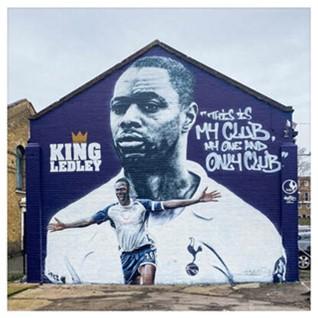Chapel Stones and Tottenham Baptist Church
Walking along this stretch of Tottenham High Road one might not see the side-opening to the historic pathway called Chapel Stones that runs alongside the Tottenham Baptist Church. With its imposing façade and its iconic Greek temple-style columns of its Doric porch, the Baptist Church is an instantly recognisable landmark at this point of the High Road. Built in 1825 by Joseph Fletcher, It is now Grade II listed. During the early 1990s its façade was restored to its original simplicity.

(From the collections and © Bruce Castle Museum and Archive)
One of the Church’s more controversial attendees was William Hone (1780-1842), a radical publisher and freethinker who was a pivotal figure in protecting the freedom of the press against government censorship. In his later life, somewhat surprisingly given his earlier works of religious satire, Hone converted to Christianity and died with a Tottenham Baptist communion ticket in his pocket. Hone spent the last two years of his life in a small home on Church Road, just round the corner from Bruce Castle. The newly built Tottenham Baptist Church would have been a short and convenient walk away for Hone, who was incredibly frail from a series of strokes which would eventually take his life. If he was able to walk to chapel, as it was known when it was first opened, then Chapel Stones would have been the route taken by Hone from Bruce Castle via James’ Place to the High Road to worship.
William Hone’s advocacy for the free press set the precedent for radical publishers for centuries to come. One such publisher was based on Tottenham High Road at Tottenham Community Project.

(The political work of William Hone was published with illustrations by his good friend George Cruickshank.Image courtesy and © The British Museum)

(William Hone, an oil painting by George Patten in the National Portrait Gallery. Courtesy of The National Portrait Gallery, London)
Tottenham Community Sports
This building’s past, present and future is truly rooted in the local community. The site now occupied by Tottenham Community Sports was originally the Tottenham Territorial Army Drill Hall. In 1969, the building began its life as a sports centre when it was acquired by Haringey Sports Council.
Eventually, the building was bought by Haringey Council and when local government cuts threatened the future of the site, the Sports Council stepped in again and set up a charitable trust in order to organise a long-term lease. Thanks to these incredible efforts, the Tottenham Community Sports Centre remains a vital hub for Tottenham’s sporting communities.
Honouring our local sporting heroes
Ledley King is just one of Tottenham’s many sporting legends, and in 2022 a 25-foot mural was unveiled in his honour at Tottenham Community Sports. The mural includes ‘King Ledley’s’ famous quote about Spurs: ‘This is my club, my one and only club’. The Tottenham Hotspur Supporters’ Trust (THST), who commissioned and part-funded the artwork with the help of Tottenham Hotspur Football Club, said it “opens a new chapter in Spurs history”. THST board member Rob White (son of another Spurs legend John White) said: “Murals are a great way of being able to raise awareness of great players, and great moments. You can watch an animated video for more about the mural and also see the different stages of how the mural was made.

(From the collections and © Bruce Castle Museum and Archive)
Moselle House
Set back from the High Road, this is one of the many surviving 18th century buildings that can be found along this historical high street. Built in c.1714 and a Grade II listed building, the beautiful stock-brick work and ornate portico entrance of Moselle House can still be viewed from the corner of the High Road and Church Road where it sits.

(From the collections and © Bruce Castle Museum and Archive)
But why the name? Moselle House is named after the River Moselle, one of Tottenham’s hidden streams that runs under the area to the front of this grand house. If you’d like to learn more about the Moselle, its route, history and development, then here is a wonderful resource put together by Bruce Castle Museum and Archive.

(From the collections and © Bruce Castle Museum and Archive)
And what about the people that lived there? Moselle House has seen many residents – at one time the house was even reported to have been a school for ‘young ladies’ kept by the Misses Lindsey – but in the late Victorian period it was home to the Christmas family! In the 1901 census, there were eight members of the Christmas family living in Moselle House. William Durrant Christmas, as head of the household, was a stockbroker’s clerk. His wife was (quite aptly) named Mary Christmas! It must have been especially festive at this particular Tottenham property during December…
Location
Historic High Road
London
N17 8AD
United Kingdom